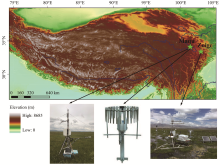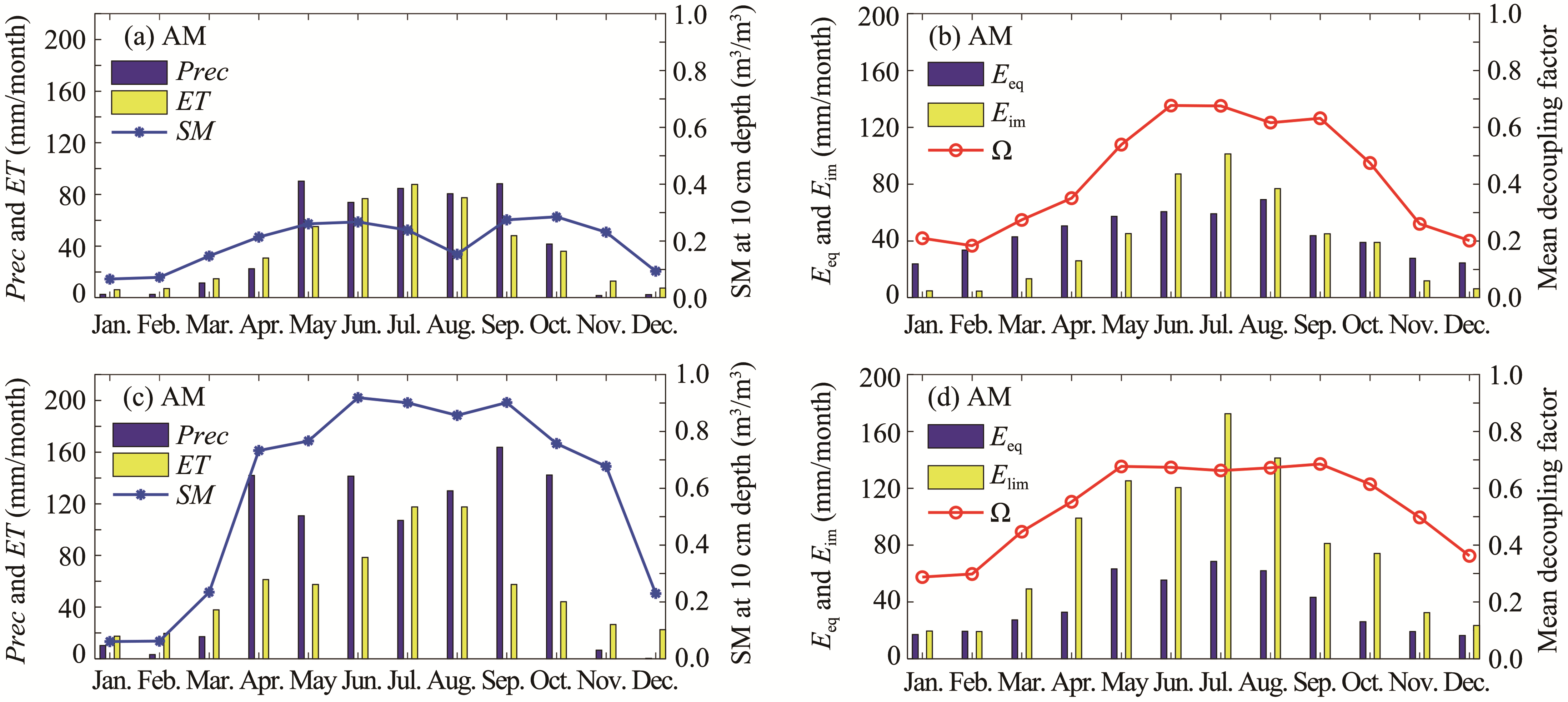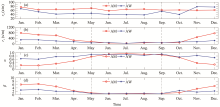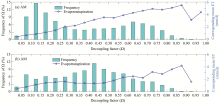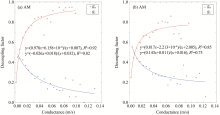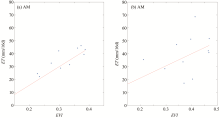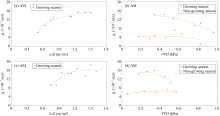Sciences in Cold and Arid Regions ›› 2021, Vol. 13 ›› Issue (1): 53–61.doi: 10.3724/SP.J.1226.2021.20072
The evapotranspiration and environmental controls of typical underlying surfaces on the Qinghai-Tibetan Plateau
JinLei Chen1,Jun Wen2,4( ),ShiChang Kang1,3,XianHong Meng2,XianYu Yang4
),ShiChang Kang1,3,XianHong Meng2,XianYu Yang4
- 1.State Key Laboratory of Cryospheric Science, Northwest Institute of Eco-Environment and Resources, Chinese Academy of Sciences, Lanzhou, Gansu 730000, China
2.Key Laboratory of Land Surface Processes and Climate Change, Northwest Institute of Eco-Environment and Resources, Chinese Academy of Sciences, Lanzhou, Gansu 730000, China
3.CAS Centre for Excellence in Tibetan Plateau Earth Sciences, Beijing 100101, China
4.College of Atmospheric Sciences, Chengdu University of Information Technology, Chengdu, Sichuan 610225, China
|
Chen JL, Wen J, Kang SC, et al., 2020. Assessments of the factors controlling latent heat flux and the coupling degree between an alpine wetland and the atmosphere on the Qinghai-Tibetan Plateau in summer. Atmospheric Research, 240: 104937. DOI: 10.1016/j.atmosres.2020.104937.
doi: 10.1016/j.atmosres.2020.104937 |
|
|
Chen JL, Wen J, Tian H, 2016. Representativeness of the ground observational sites and up-scaling of the point soil moisture measurements. Journal of Hydrology, 533: 62-73. DOI: 10.1016/j.jhydrol.2015.11.032.
doi: 10.1016/j.jhydrol.2015.11.032 |
|
|
Chen Y, Xia JZ, Liang SL, et al., 2014. Comparison of satellite-based evapotranspiration models over terrestrial ecosystems in China. Remote Sensing of Environment, 140: 279-293. DOI: 10.1016/j.rse.2013.08.045.
doi: 10.1016/j.rse.2013.08.045 |
|
|
Donatelli M, Bellocchi G, Carlini L, 2006. Sharing knowledge via software components: models on reference evapotranspiration. European Journal of Agronomy, 24: 186-192. DOI: 10.1016/j.eja.2005.07.005.
doi: 10.1016/j.eja.2005.07.005 |
|
|
Ding RS, Kang SZ, Vargas R, et al., 2013. Multiscale spectral analysis of temporal variability in evapotranspiration over irrigated cropland in an arid region. Agricultural Water Management, 130: 79-89. DOI: 10.1016/j.agwat.2013. 08.019.
doi: 10.1016/j.agwat.2013. 08.019 |
|
|
Gu S, Tang Y, Cui X, et al., 2008. Characterizing evapotranspiration over a meadow ecosystem on the Qinghai‐Tibetan Plateau. Journal of Geophysical Research: Atmosphere, 113: D08118. DOI: 10.1029/2007JD009173.
doi: 10.1029/2007JD009173 |
|
|
Immerzeel WW, Van Beek LPH, Bierkens MFP, 2010. Climate change will affect the Asian water towers. Science, 328: 1382-1385. DOI: 10.1126/science.1183188.
doi: 10.1126/science.1183188 |
|
|
Jarvis PG, Mcnon-aughton KG, 1986. Stomatal control of transpiration: scaling up from leaf to region. Advances in Ecological Research, 15: 1-49. DOI: 10.1016/s0065-2504(08)60119-1.
doi: 10.1016/s0065-2504(08)60119-1 |
|
|
Jia X, Zha TS, Gong Jnon, et al., 2016. Energy partitioning over a semi‐arid shrubland in northern China. Hydrological Processes, 30: 972-985. DOI: 10.1002/hyp.10685.
doi: 10.1002/hyp.10685 |
|
|
Jung M, Reichstein M, Ciais P, et al., 2010. Recent decline in the global land evapotranspiration trend due to limited moisture supply. Nature, 467: 951-954. DOI: 10.1038/nature09396.
doi: 10.1038/nature09396 |
|
|
Karam F, Lahoud R, Masaad R, et al., 2007. Evapotranspiration, seed yield and water use efficiency of drip irrigated sunflower under full and deficit irrigation conditions. Agricultural Water Management, 90(3): 213-223. DOI: 10. 1016/j.agwat.2007.03.009.
doi: 10. 1016/j.agwat.2007.03.009 |
|
|
Li SG, Eugster W, Asanuma J, et al., 2006. Energy partitioning and its biophysical controls above a grazing steppe in central Mongolia. Agricultural and Forest Meteorology, 137: 89-106. DOI: 10.1016/j.agrformet.2006.03.010.
doi: 10.1016/j.agrformet.2006.03.010 |
|
|
Liu XD, Chen BD, 2000. Climatic warming in the Tibetan Plateau during recent decades. International Journal of Climatology, 20: 1729-1742. DOI: 10.1002/1097-0088(20001130)20:14<1729::aid-joc556>3.0.co;2-y.
doi: 10.1002/1097-0088(20001130)20:14<1729::aid-joc556>3.0.co;2-y |
|
|
Ma N, Zhang YS, Guo YH, et al., 2015. Environmental and biophysical controls on the evapotranspiration over the highest alpine steppe. Journal of Hydrology, 529: 980-992. DOI: 10.1016/j.jhydrol.2015.09.013.
doi: 10.1016/j.jhydrol.2015.09.013 |
|
|
Mcnon-aughton KG, Spriggs TW, 1986. A mixed-layer model for regional evaporation. Boundary-layer Meteorology, 34: 243-262. DOI: 10.1007/BF00122381.
doi: 10.1007/BF00122381 |
|
| Monteith JL, 1965. Evaporation and environment. Symposia of the Society for Experimental Biology, 19: 205-234. | |
| Monteith JL, Unsworth MH, 2013. Principles of Environmental Physics: Plants, Animals, and the Atmosphere. Academic Press, Amsterdam. | |
|
Pan SF, Pan NQ, Tian HQ, et al., 2020. Evaluation of global terrestrial evapotranspiration using state-of-the-art approaches in remote sensing, machine learning and land surface modeling. Hydrology and Earth System Sciences, 24: 1485-1509. DOI: 10.5194/hess-24-1485-2020.
doi: 10.5194/hess-24-1485-2020 |
|
|
Sutherlin CE, Brunsell NA, de Oliveira G, et al., 2019. Contrasting physiological and environmental controls of evapotranspiration over kernza perennial crop, annual crops, and C4 and mixed C3/C4 grasslands. Sustainability, 11: 1640. DOI: 10.3390/su11061640.
doi: 10.3390/su11061640 |
|
|
Takanashi S, Kosugi Y, Ohkubo S, et al., 2010. Water and heat fluxes above a lowland dipterocarp forest in Peninsular Malaysia. Hydrological Processes, 24: 472-480. DOI: 10. 1002/hyp.7499.
doi: 10. 1002/hyp.7499 |
|
|
Tong XJ, Zhang JS, Meng P, et al., 2017. Environmental controls of evapotranspiration in a mixed plantation in north China. International Journal of Biometeorology, 61: 227-238. DOI: 10.1007/s00484-016-1205-0.
doi: 10.1007/s00484-016-1205-0 |
|
|
Wever LA, Flanagan LB, Carlson PJ, 2002. Seasonal and interannual variation in evapotranspiration, energy balance and surface conductance in a northern temperate grassland. Agricultural and Forest Meteorology, 112: 31-49. DOI: 10. 1016/s0168-1923(02)00041-2.
doi: 10. 1016/s0168-1923(02)00041-2 |
|
|
You QL, Min JZ, Kang SC, 2016. Rapid warming in the Tibetan Plateau from observations and CMIP5 models in recent decades. International Journal of Climatology, 36: 2660-2670. DOI: 10.1002/joc.4520.
doi: 10.1002/joc.4520 |
|
|
Yu SM, Liu JS, Xu JQ, et al., 2011. Evaporation and energy balance estimates over a large inland lake in the Tibet-Himalaya. Environmental Earth Sciences, 64: 1169-1176. DOI: 10.1007/s12665-011-0933-z.
doi: 10.1007/s12665-011-0933-z |
|
|
Yue P, Zhang Q, Yang Y, et al., 2018. Seasonal and inter-annual variability of the Bowen smith ratio over a semi-arid grassland in the Chinese Loess Plateau. Agricultural and Forest Meteorology, 252: 99-108. DOI: 10.1016/j.agrformet. 2018.01.006.
doi: 10.1016/j.agrformet. 2018.01.006 |
|
|
Zhang X, Liu XQ, Zhang LF, et al., 2019. Comparison of energy partitioning between artificial pasture and degraded meadow in three-river source region on the Qinghai-Tibetan Plateau: A case study. Agricultural and Forest Meteorology, 271: 251-263. DOI: 10.1016/j.agrformet.2019.02.046.
doi: 10.1016/j.agrformet.2019.02.046 |
|
|
Zhu GF, Lu L, Su YH, et al., 2014. Energy flux partitioning and evapotranspiration in a sub‐alpine spruce forest ecosystem. Hydrological Processes, 28: 5093-5104. DOI: se/10. 1002/hyp.9995.
doi: se/10. 1002/hyp.9995 |
| No related articles found! |

